Well, someone else’s sponsors, actually.
We recently came into possession of this July 1976 issue of Popular Electronics, and scanned a few of the vintage ads– including a few from companies that you might recognize.
First up: “Poly-Pak’s exclusive Barrel Kits”:
Here’s a closer look at lower-right corner:
We like the description of kit #133: “How good? Who knows? Who cares!”
Click here for mega resolution on the full page.
Next, we have Radio Shack, selling– wait for it –radios:
Blowing up the text large enough to read…

And now, an ad from the reliably-odd Edmund Scientific:
“Live in the world of tomorrow… today!”
It’s nice to know that here in the future not only do we have miniature calculators, but also a 3-channel color organs, brainwave readers, and infrared viewers.
(Click here for mega resolution on the full ad.)
James Electronics company (now known as Jameco) has this two page spread:
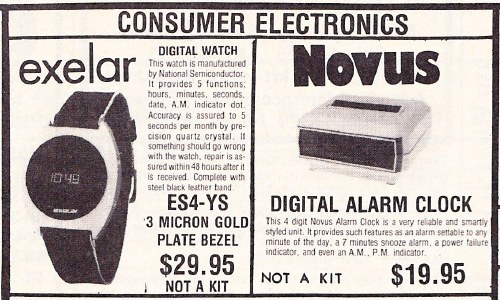
Click here and here for mega-resolution on the two full pages.
Next up: Who’s that hawking breadboards?

Yes, it’s good-old Digi-Key:
Full resolution image available here.





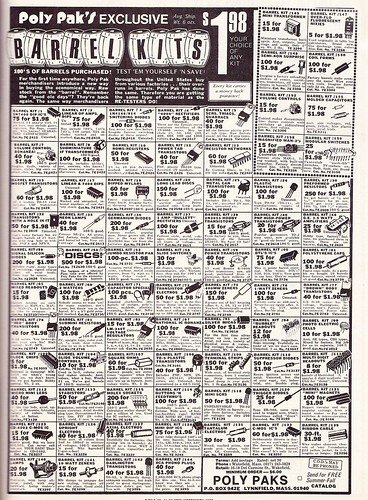
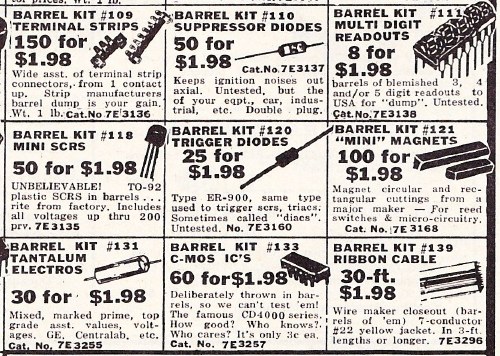
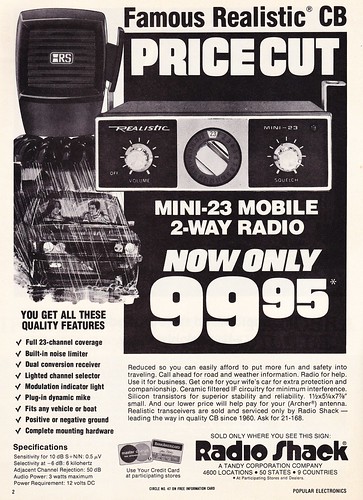
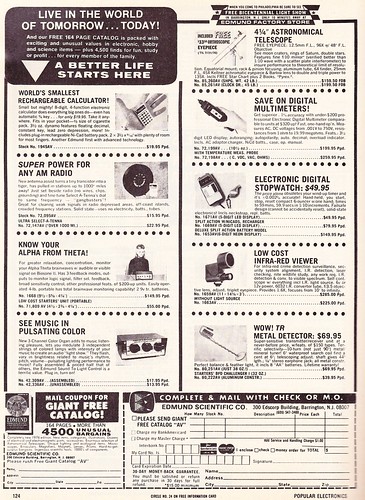
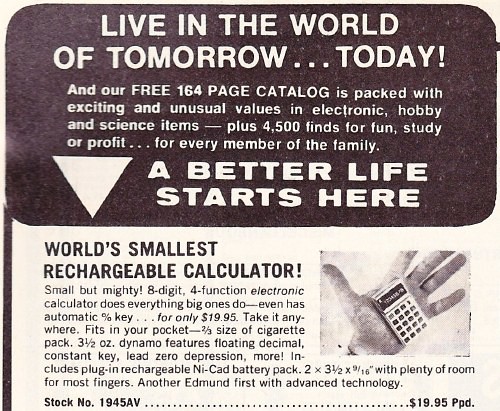
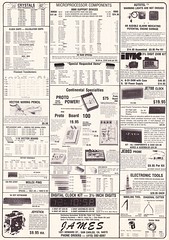
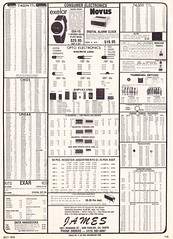
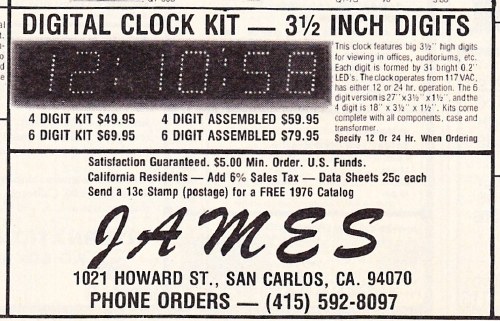

If you like the “who knows? who cares?” you will undoubtedly love the catalog of American Science and Surplus
"Live in the world of tomorrow… today. A better life starts here"
Hmm, where have I heard something similar?
"A new life awaits you in the Off-World colonies. The chance to begin again in a golden land of opportunity and adventure. New…– A new life awaits you in the Off-World colonies."
;-)
Why does the calculator only have 8 digits?
Because there were only 8 known digits back then. And numbers only went up to 8 places. Inflation of course has made larger digits and numbers possible, so that poor calculator is now obsolete.
Wow, I’d like to know more about the "intelligent" terminal project and the "Microwave Ovens for the Home". I’ll bet both articles are pretty funny in today’s context.
Poly Paks was a major drain on my meager allowance as a kid. I bought a barrel kit filled with mostly leaky 10 uF capacitors and had fun popping them (bang!) by connecting them directly to an old filament transformer.
…and that is why to this day my dad warns me about polarity…the joys of picking up pieces of exploded electrical components…fun…at least I didn’t have to do that…I still had several wires crossing all over the place with no labels on them…anyone else notice the overuse of "…"…
I am curious about your decision chip wise and sticking with 8bit in particular.
Clearly the Xmega range is neat, but as you say, but it has neither pin compatibility or software compatibility with what went before (mega etc..). Thus you had an equal opportunity to go with something like Arm cortex M0 from the likes of say STM or NXP.
Take NXP for example their LPC 11XX range begins at a mere $0.65 and delivers 32 bit at 50Mhz with similar peripherals, did you consider making the jump to 32 bit, what where your reasons for staying with 8 bit, given the apparent price advantage of something like the lpc11xx?
regards
Al
YAY POLY PACKS! Kids like me could buy actual 7-segment LED displays, and they didn’t cost $10 per digit like the new ones.
I actually made the trek to their store in Boston. I was up there for a SF con, but found that they weren’t open on weekends. Drat. It was a little 1-storey white building, and I could see the boxes of junk on tables through the dirty windows. Never did build that 4-function calculator. Almost as small as a portable radio!
Ah yes. Good old Poly Paks.
In high school, my friend and I would buy bunches of these bags of parts.
While we only used a fraction of them to actually build something – mostly 7-segment display stuff, it was fun and inspiring to imagine what we could build :-)
According to "The Inflation Calculator", you should multiply the 1976 prices by $3.73 to convert them to 2009 dollars.